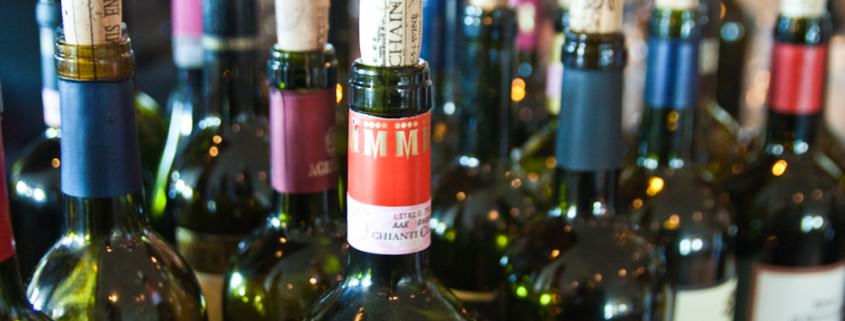Your Wine Is Gross, Here’s the Fix
I love wine, but I usually don’t order it at bars. In fact, I frequently don’t even order it at restaurants. It’s not because I can’t find wine, actually it’s the opposite: wine is everywhere these days. The sad truth is, when I used to order wines at bars, most of the wines I ordered were disgusting–and if your wine sales are low, your wine might be disgusting, too.
If you open wines for single-glass pours on a haphazard basis, store the opened bottles behind the bar for an indeterminate amount of time, or stick all of your wine in the fridge, your wine is likely to be terrible. If you want to sell more wine (or at least sell the wine you’ve already purchased), you need to do better. This article offers four wine storage fixes to increase your wine sales.
1. Keep it fresh
The number one problem I experience with wine served in bars is the age of the wine. You know how beer goes flat after a few hours of being out? Yeah, wine does that, too. Wine has a better on-the-counter shelf life than beer, but after two days, maximum, wine develops an off taste reminiscent of sucking on old pennies that someone found in a gutter. If a bottle of wine isn’t consumed within two days, throw it out or bring it home and drink it yourself.
2. Use a wine fridge
Wine is pretty tricky stuff, and wine storage takes some careful management. To stay at prime conditions, different wines call for different storage temperatures with an optimal humidity level of 70-90%, and wine should never be stored in the same fridge you store your food in.
Wait, why can’t you store wine in a regular fridge?
Storing wines in the same fridge that you use for your food will ruin your wine for a few reasons:
-
Vibration: The way your food fridge hums along will shake up your wine too much.
-
Temperature: The excessive cold will zap the flavor and subtlety right out of your wines.
-
Humidity: The 30% humidity in a typical fridge will dry out the cork, which will cause oxygen to get into your bottle.
Wine fridge basics
Wine fridges are made for wine–they minimize vibrations, maintain an optimum temperature and humidity level, and they store the bottles sideways, which helps the cork stay moist. White wines should be stored within a few degrees of their optimum serving temperature of 48˚F, and red wines can be stored in temperatures up to 65˚F. If you’re storing both red and white in the same fridge, you should set the temp for a happy medium of 55˚F.
3. Store it in the dark
Glass bottles aren’t very good at blocking out UV rays, which harm wine (and beer) just as much as they harm us. To keep your bottles safe, you should ideally store wine in complete darkness, such as in a cabinet or in a box. If these options aren’t possible behind your bar, try to wrap the bottle completely in a thick cloth to block out the sunlight.
4. Turn it sideways
Wine is typically stored sideways to maintain the integrity of the cork. If you store a bottle of wine upright, the cork can dry out and allow air to enter the bottle, which gives wine that penny-in-a-gutter taste. Always store wine bottles on their side so that the cork stays moist and keeps your wine delicious. When you are ready to serve wine, turn it right-side-up for a few minutes so that the sediment falls to the bottom of the bottle.
I wouldn’t recommend trying to cellar your wines for long-term storage. Unless you run a wine bar, the costs, maintenance, and knowledge required for long-term wine storage are prohibitive. If you’ve been trying to store wine already, throw out your 2 year+ whites, sell your old New World wines fast, and drink your aged Old World reds yourself. They’ll make for a great party, and you’ll have cause for celebration once you start fixing that wine storage and increasing your wine sales.
Photo licensed for use by Steven Depolo
- Why Your Wine Menu Is Scaring Your Guests - February 27, 2015
- How to Host a Better Restaurant Week and Get More Customers - February 23, 2015
- Choosing Your Restaurant Wine Glass – 3 Approaches - February 16, 2015









